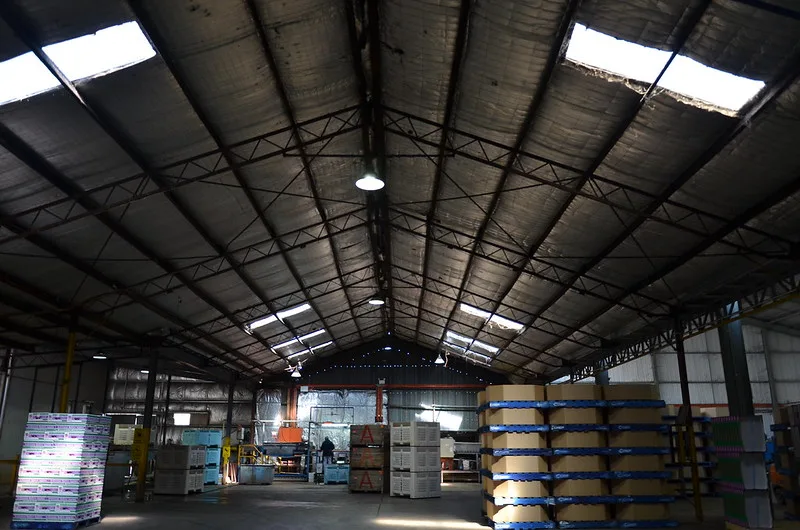To acquire the best shed lighting, you first need to determine the purpose of your shed, the kind of lighting you want, and the cost of that lighting.
Natural lighting, artificial lighting, and a combination of both systems are all viable options in this day and age.

If you’re heading the artificial lighting route, do you want solar powered shed lights or battery-powered ones?
Should you let the electrician make that decision for you? How many lumens are needed to light your shed? We’ll answer these questions and more as we go over the ideal shed lighting tips.
Optimal Shed Lighting
There are numerous options when it comes to shedding lighting. To determine which is right for a particular shed, you must understand the difference between artificial light and natural light.
Some types of light are great for a garage shed, while others are a decent choice for a greenhouse shed. Moreover, a battery-powered LED might be all you need to power a small tool shed.
Natural Lighting
Natural light is the light that shines through your window. It’s the natural light that comes from the sun. If that’s the kind of lighting you want for your shed, make sure to get a few things ready.
First, you want to pick a spot for your shed where the sun hits just right. Building it in a shady, remote corner of your yard might not allow a lot of sunlight to get in.
Also, cold climates and high altitudes might not provide enough natural light, to begin with. So, the natural light selection also depends on your climate and location.
Artificial Lighting
Anything other than outside light can be considered artificial light. This type of lighting offers a vast array of options, from incandescent to fluorescent and LED. Make sure you research all three so you’ll know which light is most suitable for your shed.
Read Also:
What to Consider When Choosing Light Sources
What factors should you consider when choosing a shed light? Below are the most important ones.
Brightness or Lumens
Lumens are the unit of measure for brightness and significant consideration for choosing a shed light. The higher the lumens, the brighter the bulb. If you want to know how much light a bulb emits, check the lumens label.
To determine the lumens to light your shed, you need to go back to your purpose. If you’re planning to use the shed as a home office or retreat, a low lumens bulb should provide sufficient lighting.
On the other hand, if you’re using the shack for carpentry or woodworking, you might need a bulb with higher lumens.
So, is the shed more for ambiance than anything else, or is it a place where you plan to do some practical stuff? The answer to this question could determine the lumens figure you need.
Energy Efficiency
You want to keep electric bill figures at a minimum as much as possible. For optimal energy savings, consider the cost and lifespan of your bulb.
You should get an idea of this by checking the bulb wattage listed on the package. A high energy figure typically means a high shed lighting cost.
Watts
How much energy a light bulb uses up is determined by the “watts” label. It also determines how much the electric company charges for the bulb’s use.
Thus, when you compare an LED bulb that’s 15 watts and gives off 800 lumens and a 60-watt bulb that emits that same number of lumens, both give the same brightness, but the LED option uses up less energy. So, we can also say that an electric company will charge you less for using the LED.
A shed run on battery or solar holds more weight of consideration for wattage due to the limited electric supply.
Color
Color isn’t as easy a consideration as the rest since it tends to be an issue of personal preference. When you talk of light color, you’re basically assessing its warmth.
Light can have a color that’s more than white instead of orange, red, or yellow. Wavelength and light source are what dictate color. It’s something you need to research further to truly understand.
Measuring Lumens
It was mentioned earlier that the lumens’ figure determines its brightness, but what exactly are lumens? Lumens are the brightness of a light source measured as a one-foot candle.
That is the measurement a foot away from the center of a candle’s flame. Meaning the figure presented in the previous section of 800 lumens equals the lighting power of 800 candles. Now, isn’t that quite something?
So, What Lumens Figure Do You Need for Your Shed?
The lumens or brightness of your shed lighting should be determined by your shed’s purpose and the type of light most effective for that purpose.
Lumens also correlate with other lighting elements, so you must also learn about them to ensure you made the right light choice.










